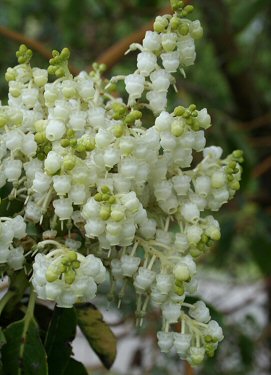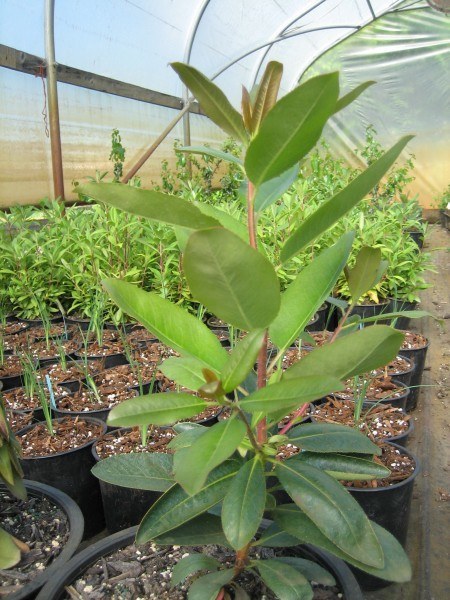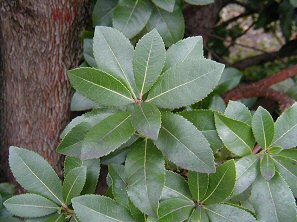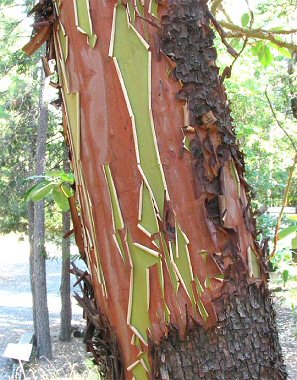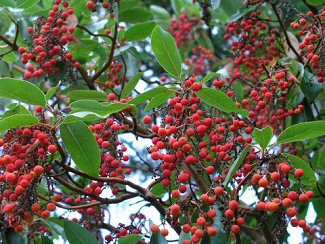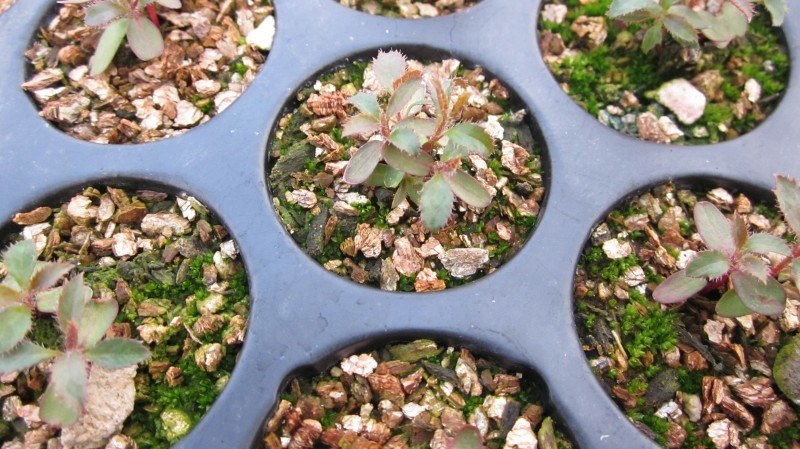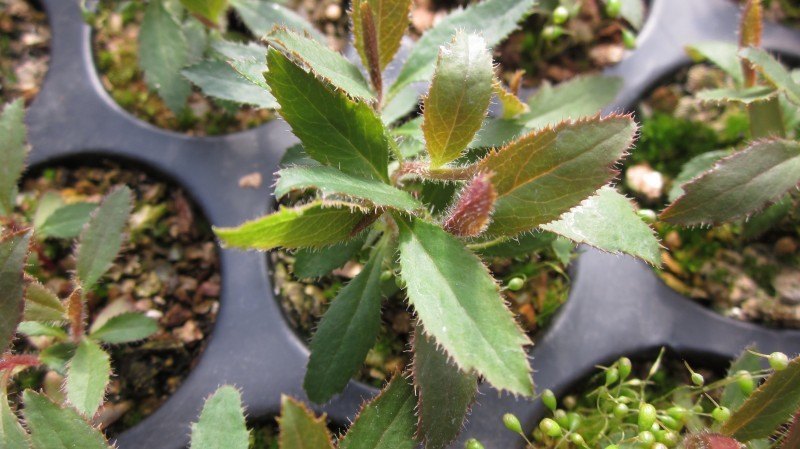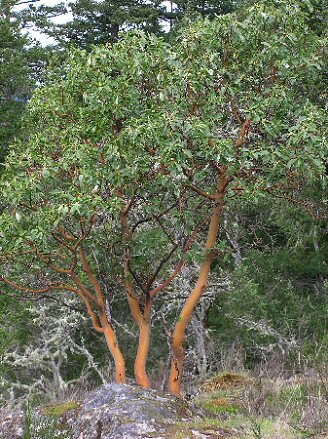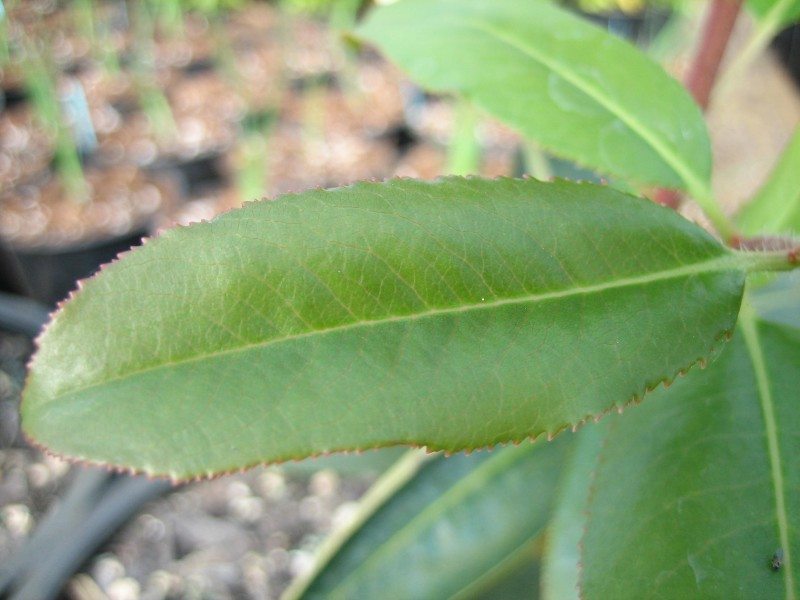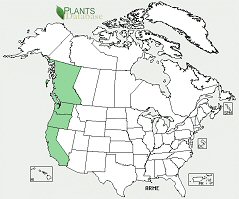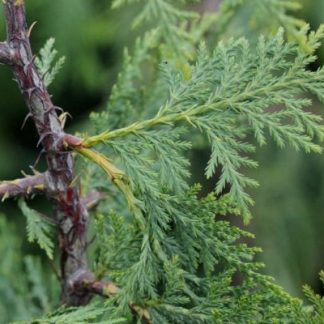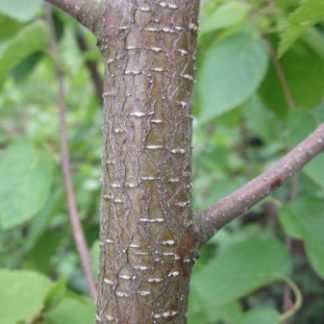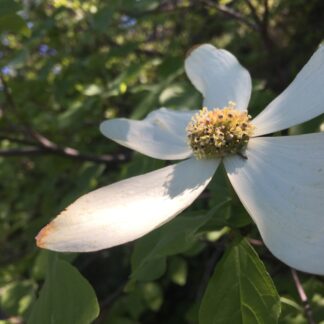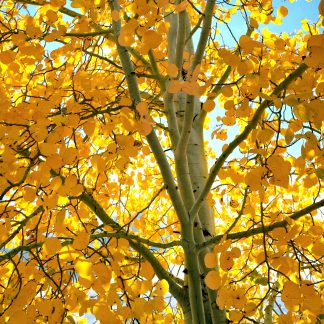Arbutus menziesii
Pacific madrone
Habit: a stately broadleaf evergreen tree with a rounded, spreading crown composed of heavy, irregularly shaped limbs. Usually single stemmed but will form multiple trunks or re-sprout from an underground woody burl if the main stem is damaged or destroyed. Pacific madrone has three types of bark. The bark on branches and younger trunks is thin and papery, terra cotta orange-red, that peels and flakes off to reveal a smooth, inner layer of bark in shades of cream to olive green. Older trunks develop a thick, brownish-red, fissured bark. The 3-6 inch (8-15cm) leathery, dark green shiny leaves are oblong and remain on the tree for two years before they turn orange to red and begin falling off in June to July. Fragrant bell-shaped flowers appear in large, drooping clusters at the ends of the branches from March through May. The small, spherical, pebbled skinned fruits ripen to a bright orange-red in the fall and persist into December.
Ecology: Arbutus menziesii is native to the Pacific Coast occurring from Southwestern British Columbia, southward through Washington, Oregon, and California in the coastal mountains and west slopes of the Sierra Nevada. It is found in hot, dry lowland sites as well as dry foothills, canyons, humid coastal sites, and south facing wooded slopes up to 5,000 feet (1,500 m) in elevation. These trees are commonly associated with other species: oak, redwood, mixed evergreen forests; and rarely occur in pure stands.
Growing Conditions: full sun or light shade and dry well drained infertile soil; drought tolerant but has a low tolerance to frost. Soils supporting Pacific madrone usually exhibit low moisture content throughout most of the summer.
Having a wide and deep spreading root system, Arbutus menziesii makes a good choice for providing stability and preventing erosion. The trees host butterfly caterpillars and provide perches and nesting places for many bird species. The flowers are a nectar source for bees, butterflies, and other insects. Small mammals and numerous birds eat the fruits.
Specs
Evergreen Tree
16-100 ft (5 to 30m)
to 50 ft (15m) diameter 2-3 ft (0.6-1m)
7-9

